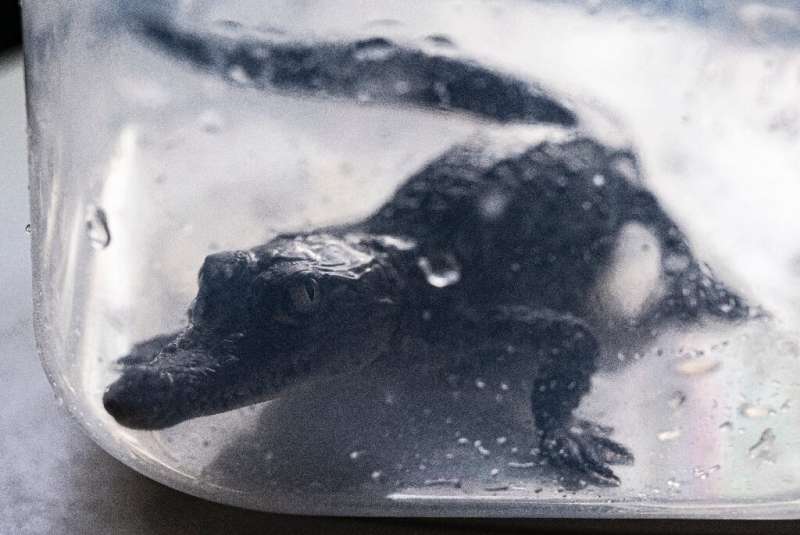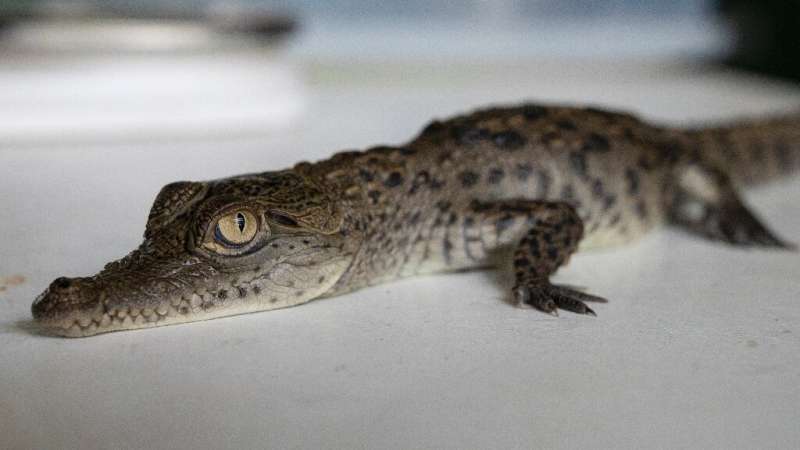A new species of giant tortoise has been discovered in the Galapagos after DNA testing found animals living on one island had not yet been recorded, Ecuador’s environment ministry said

Researchers compared the genetic material of tortoises currently living on San Cristobal with bones and shells collected in 1906 from a cave in the island’s highlands and found them to be different.
ALSO READ: Critically endangered bat not seen in decades found in Rwanda
FOUND TORTOISE SPECIES IS ‘ALMOST CERTAINLY EXTINCT’
The 20th-century explorers never reached the lowlands northeast of the island, where the animals live today, and as a result, almost 8 000 tortoises correspond to a different lineage to what was previously thought.
“The species of giant tortoise that inhabits San Cristobal Island, until now known scientifically as Chelonoidis chathamensis, genetically matches a different species,” the ministry said Thursday on Twitter.
Galapagos Conservancy said in a newsletter that the Chelonoidis chathamensis species is “almost certainly extinct” and that the island had in fact been home to two different varieties of tortoise, one living in the highlands and another in the lowlands.
THERE WERE ORIGINALLY 15 SPECIES OF GIANT TORTOISE IN SAN CRISTOBAL
Located in the Pacific about 1 000 kilometres off the coast of Ecuador, the Galapagos Islands are a protected wildlife area and home to unique species of flora and fauna.
The archipelago was made famous by British geologist and naturalist Charles Darwin’s observations on evolution there.
There were originally 15 species of giant tortoise on the islands, three of which became extinct centuries ago, according to the Galapagos National Park.
A NEW NAME FOR TORTOISES LIVING ON SAN CRISTOBAL
In 2019, a specimen of Chelonoidis phantastica was found on Fernandina Island more than 100 years after the species was considered extinct.
The study by researchers from Newcastle University in Britain, Yale in the United States, the American NGO Galapagos Conservancy and other institutions was published in the scientific journal Heredity.
They will continue to recover more DNA from the bones and shells to determine whether the tortoises living on San Cristobal, which is 557 kilometres long, should be given a new name.
Four endangered American crocodiles are born in Peru

A Lima zoo announced Thursday the birth in captivity of four American crocodiles, an endangered species, after a successful artificial incubation.
The crocodile hatchlings were born in mid-January after 78 days of incubation from the eggs of a pair of adult crocodiles that live in the Huachipa Zoological Park, east of Lima.
"We have now shown these crocodile pups that were just born 45 days ago at the zoo," Jose Flores, head of the zoo's reptile area, told AFP.
"Any birth of any species that is threatened and (in) danger of extinction must be considered an achievement," he stressed.
The hatchlings live in a special fish tank, measure 26 centimeters (10.2 inches) and weigh between 70 and 90 grams (0.15 to 0.19 lbs) each.
They have the traditional olive green color of the species and protruding eyes. They feed on small pieces of chicken and fish.
In Peru, they are known as "Tumbes crocodiles" because their natural habitat is the mangroves of Tumbes, on the border with Ecuador.
"This species, in Peru, is in danger of extinction mainly due to the destruction of its natural habitat," explained Flores, 39.
The small reptiles belong to the Crocodylus Acutus species and are the only ones that survived from the 25 eggs that the mother incubated.

At 195 kilograms (430 lbs), the father crocodile is five meters (yards) long while the mother is 2.5 meters long and weighs 85 kilos. They are both 20 years old.
This species is found in the southern United States, Mexico and Venezuela, but in countries such as Peru and Ecuador it is critically endangered.
Relentless hunting for their skins reduced numbers dramatically in the 1960s. There are now restrictions controlling the trade in crocodiles and their skins.
© 2022 AFP
No comments:
Post a Comment